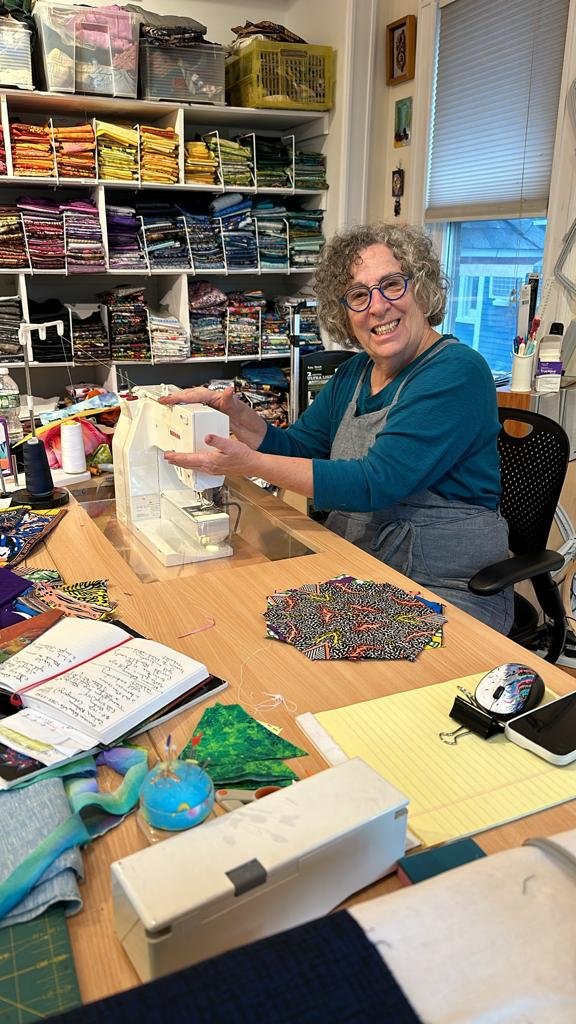SaturdaY March 16th 2024
Lecture : We Yone Learning Center and Sheri's Place: A Quilter's Legacy in Sierre Leone
Using traditional women’s work to express political ends is a time-honored path, from sampler-stitching Abolitionists to textile weavers in the Middle East who “wrote” their narratives on their looms, and Merrie derives a special satisfaction from knowing she is part of that chain.
Sherri's Place Craft Center at the We Yone Learning center in Mashika, Sierra Leone. Sherri was a brooklyn quilter who started with her husband started USACF which is the US/Africa Children's Foundation. It supports learning and impowerment projects in 8 African Countries.
Merrie Handfinger will be live at the meeting in Boca.
Time: 10am EST (approx. 1 hour + Q&A, with regular Guild meeting to follow)
Cost: The lecture is free to members. Zoom link will be sent via email or can be found in Facebook Members Only Group Events
Bio:
“I’ve spent a lifetime living up to my name,” textile artist Merrie Handfinger says, with a laugh. Trained in the hands-on healing of chiropractics and massage, Merrie has always created art with her hands, doing needlework for pleasure—and for the challenge of “seeing something creative, something finished.”
Making silk tallisim, or Jewish ritual prayer shawls, has many levels of meaning for Merrie, who grew up in a traditional Jewish community, where they are worn only by men. As a woman, a feminist, and the mother of a young daughter, Merrie relishes her special role as tallis-maker to the women of her community. Taking her design cues from their imaginations, she asks, “What is your vision? Show me your dream. I will do my best to achieve it.”
Growing up in the well-paved heart of Brooklyn, Merrie escaped with her family to the green valleys and cozy bungalow colonies of the Catskill Mountains every summer. “To keep me out of trouble, my mother bought me a pre-stamped cross-stitch pillowcase kit, and I was started.” Her debut as a needleworker was at age 9, but the first seeds were sown much earlier, and by another generation. “I have a vision of my grandmother in her living room in Brooklyn—in her beach chair—working with a tiny, tiny crochet hook,” turning out doilies, tablecloths, antimacassars, and other fancywork until her eyes grew too dim for close work.
Find out more on Website

